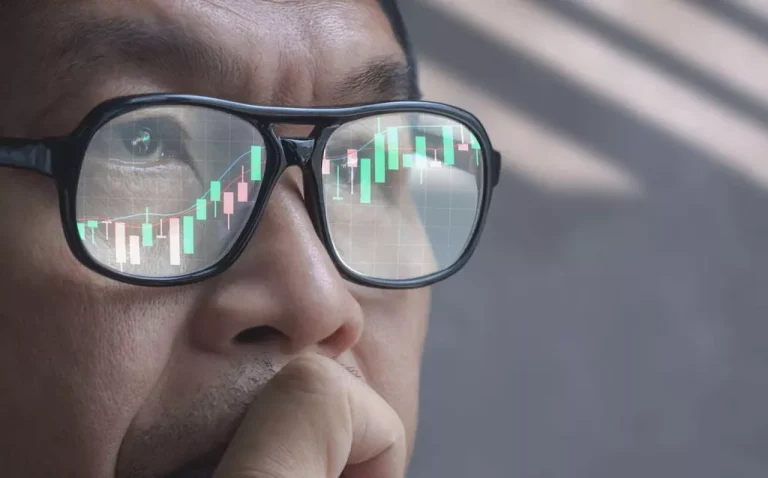As more traders enter the cryptocurrency market, they discover that bigger deals result in higher earnings. But sometimes traders don’t have enough money to make a sizable deposit. Therefore, they can opt for margin trading offered by an exchange. You may swiftly raise the available funds with these digital coin trades. However, this approach’s profitability comes with a considerable danger that goes along with using it. Expert traders who understand the ins and outs of margin crypto trading can reduce potential losses while making significant profits. In this article, let’s touch on the intricacies of the crypto margin trading exchanges that provide this service.
What is Crypto Margin Trading?
Crypto margin trading is a type of deal where you borrow funds from the brokerage firm or exchange to finance the trade in crypto tokens that serve as guarantee of the loan. This way, the trader has the opportunity to earn a more significant profit. Here, a margin is a loan intended for operations secured by a certain amount. This ensures that the money from the debt will return. The trader uses leverage during the procedure. They can open a trade in the market with leverage at 1x, 2x, 3x, 5x, 10x, and higher levels.
The realm of DeFi margin trading is ever-changing. Traders might adopt one of two market standpoints:
- Long Position means purchasing with the belief that the asset’s value will go up.
- Short Position involves selling with the expectation that the cost will decrease.
“Margin bulls” traders who keep long positions do so, hoping that the token’s value will rise, and they will profit when they sell. On the flip side, people who take short positions — referred to as margin bears — expect a decline in the value and want to repurchase the token at a reduced price to repay the lender.
Shorting is frequently the most popular approach. It results from the market’s renowned volatility and constant, round-the-clock activity. There’s always a chance of unexpected market fluctuations. Therefore, long holdings seem riskier and less predictable.
Let’s look at one example of this trading. Suppose we have a situation where ETH is worth $3,000. Imagine having just $1,000 on hand and wishing to purchase it for a future sale. You borrow $2,000 from the crypto exchange with leverage to bridge the gap. It allows you to deal with double the leverage. You create your trading position and merge the borrowed assets with available capital.
If all goes smoothly, you’ll get one ETH. But if the token drops 50% in value, the trade closes immediately, and you lose your investment (without the borrowed money). This protection ensures that borrowed money is safe and only the trader’s personally held assets are in danger.


Turnkey Brokerage Solution For Your Business
Get the most profitable fully licensed fx/crypto brokerage software or ready-to-operate business in 48 hours. Best-in-class web & mobile trading platforms, sales-driven CRM, full integration with MT4/5, and 150+ payment providers.
How Does Crypto Margin Trading Work?
Traders may increase the possible return on their margin trades. Here is a thorough explanation of how this procedure works:
- Traders begin by creating a cryptocurrency exchange profile offering margin trading. They deposit into the margin account using fiat or crypto (security of the loan).
- After funding the account, traders select the required amounts of leverage. A 2:1 ratio, as an illustration, allows traders to borrow twice as much collateral as they have.
- Traders may place buy and sell orders. The exchange makes it easier to borrow money. It enables them to take on a more prominent trading position than their actual holdings would allow.
- In this case, margin refers to the borrowed cash from the exchange. The maintenance margin is the minimal amount that traders must keep. If you drop below this level, you might get margin calls or have your position liquidated.
- To compensate for the exchange, borrowing money for margin trading has a cost in financing fees or interest costs. The length of the trades, trading platforms regulations, and market circumstances all affect the rates of these fees.
- Traders are free to end margin positions whenever they choose. Closing settles the margin deal by quickly returning funds to the account.
Crypto margin trading contains the possibility of more significant gains and hazards related to borrowed cash. Therefore, traders must comprehend and navigate these stages.

What Are the Benefits and Risks of Crypto Margin Trading?
Margin trading has benefits and possible downsides. Traders should carefully weigh their options. The following is a summary of the principal benefits:
- Traders may take on more excellent holdings in the market and, as a result, a higher possibility of profit through crypto margin trading.
- With the exchange’s intuitive interface, you may easily open and close market positions.
- Traders may customize their trading strategy and select a margin level corresponding to their investment objectives and risk tolerance.
- Margin trading allows traders to earn during moments of market volatility by enabling them to benefit from declining prices.
The possibility of suffering financial losses is one of the main risks. If the market swings against a trader’s position, there’s a chance that they’ll lose more money than they initially invested. The possibility of receiving a margin call is another risk. If a trader’s account balance falls below a certain level, the exchange can request more money to cover losses.
What Fees Are There for Crypto Margin Trading?
Various fees apply to margin trading. Some costs go to the borrower who makes the loans through the exchange, and some go straight to the exchange. Let’s dwell on the typical fees you may encounter:
- The primary form of funding exchange is a daily commission to crypto leverage trading (starting at 0.01% per day).
- An exchange rollover is a commission for extra activity related to a trader’s position. Typically, it falls between 0.01% and 0.02%.
- Commission in the Peer-to-Peer system. The exchange just serves as a venue for posting the relevant offer. It doesn’t assume the role of a borrower. You provide the user who borrows your tokens your money, and the exchange keeps a portion of what he makes (15–18%).
Charge policies can differ significantly. It’s imperative that traders thoroughly examine the cost structure of the exchange they use in margin trading. It’s also essential to comprehend how fees affect prospective gains or losses.
Margin Trading – Tool to Pull Traders
The advanced competition calls for a unique stimulating program to attract traders in the ever-expanding world of exchanges. One of the most alluring features that sets one business apart is margin trading tools. They give consumers a strong incentive to choose a particular platform. This feature’s attraction is its ability to enable traders to get the most out of their returns while lowering the initial capital outlay. Almost all leading decentralized exchanges today have added margin trading to the offerings. They realized that it may attract a more extensive user base and increase income through accumulated commissions.
Moreover, margin trading offers dealers the alluring possibility of greater earnings and enables exchanges to leverage inactive assets effectively. As a result, they see an increase in income concurrently. The way that this practice is structured protects exchanges. It minimizes losses even when a trader makes a mistake.
How Can Crypto Exchanges Assist Traders in Margin Trading?
A helpful strategy in assisting traders in reducing losses involves using a variety of advanced order types. These advanced orders enable traders to implement tried-and-true risk management practices. They are based on limit, stop, and stop-limit concepts. With these orders, traders may reduce risks by adding extra criteria to their trades.
Consider enhancing the assistance to your traders by allowing them to use fiat money to trade cryptocurrencies on margin. Leveraging fiat money for trading purposes greatly enhances planning. Even if not many exchanges can do this now, offering this kind of assistance would make your platform stand out from the competition and provide traders an extra edge.
Summing Up
Margin trading may be a helpful trading tool for experienced investors looking to enter cryptocurrency. But it’s essential to understand the idea of leverage and use this feature very sparingly. Leveraged positions can increase returns without requiring a sizable initial commitment.
While thinking about the numerous choices at your disposal, consider XCritical Crypto Exchange’s advantages. It can expedite your entry into the cryptocurrency exchange space. It enables your fully operational exchange to launch in as little as 48 hours. This all-inclusive service prioritizes safe client money storage and robust data protection. The platform includes buying, selling, and exchanging tokens and cryptocurrencies. Get the most out of your trading business with XCritical. We are ready to become your robust and innovative partner in the ever-changing world of digital asset exchanges.






